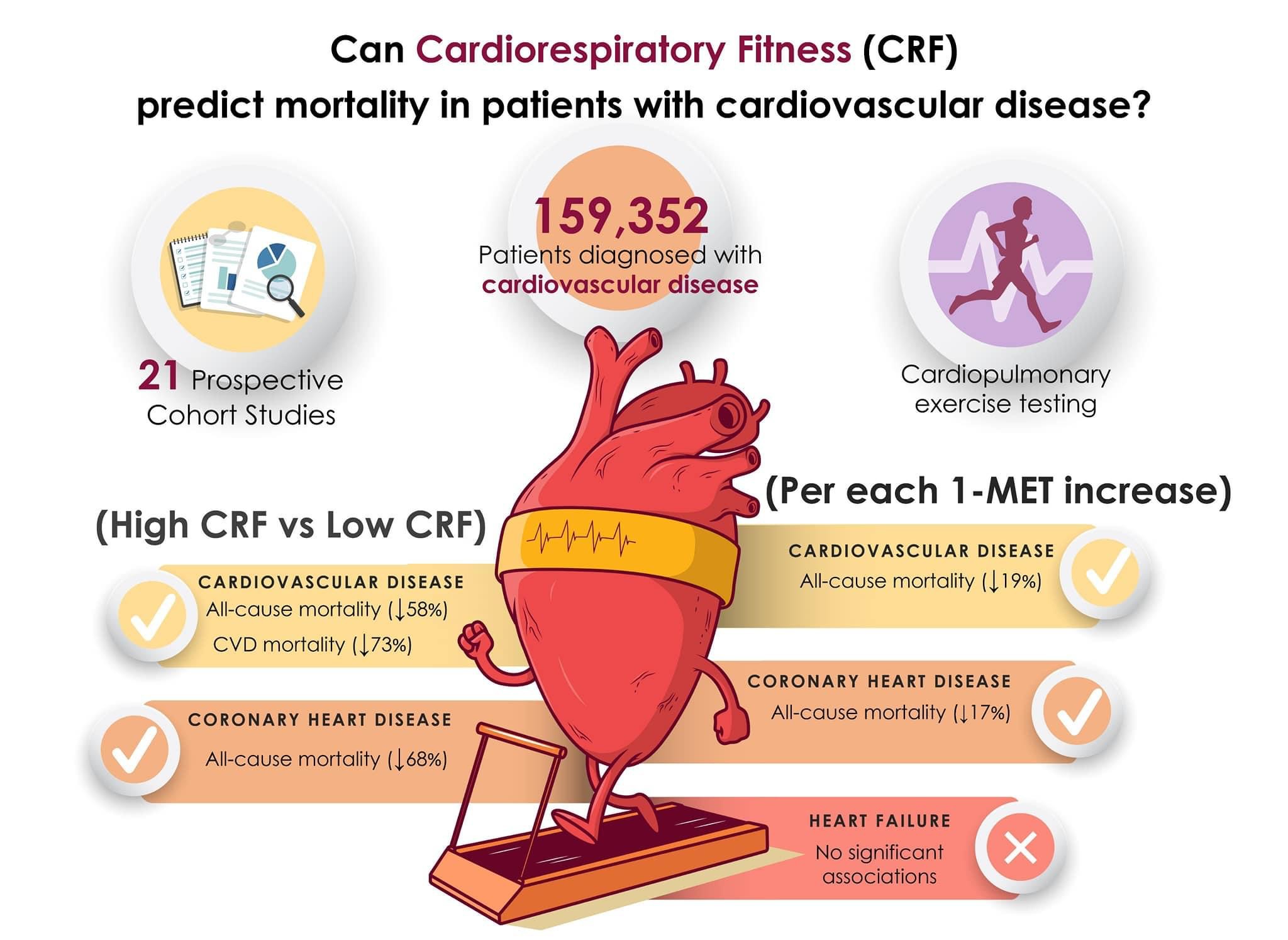In generally healthy individuals, cardiorespiratory fitness (CRF) is inversely proportional to mortality, meaning that higher fitness levels correspond to lower mortality rates. However, there is limited evidence regarding the association between CRF and cardiovascular mortality in patients with existing cardiovascular diseases.
The Study and Findings
A study published in the Journal of Sport and Health Science aimed to quantitatively evaluate this association. The authors conducted a search for studies that measured CRF in patients with cardiovascular diseases and examined both all-cause mortality and cardiovascular mortality. The observation period of the studies had to be at least 6 months.
The review included 21 studies with a total of 159,352 patients (38.1% women), all of whom had cardiovascular diseases.
Key findings were as follows:
High CRF in patients with cardiovascular diseases was associated with a 58% lower risk of all-cause mortality and a 73% reduced risk of cardiovascular mortality compared to untrained patients.
Each increase in CRF by one metabolic equivalent (1 MET) was associated with a 19% lower risk of cardiovascular mortality among patients with existing cardiovascular diseases. (1 MET represents the amount of energy expended during quiet sitting, with activities such as reading requiring approximately 1.3 MET and running ranging from 8 to 9 MET.)
Among patients with ischemic heart disease and high CRF, the risk of all-cause mortality was 68% lower than that of their untrained peers.
Each increase in CRF by 1 MET was associated with a 17% lower risk of all-cause mortality among patients with ischemic heart disease.
No significant association was found between increasing CRF by 1 MET and reducing the risk of mortality among patients with heart failure.
The findings of this study emphasize the significant role of exercise in reducing mortality rates, particularly cardiovascular mortality, in patients with cardiovascular diseases. Incorporating exercise into the routine of individuals with existing cardiovascular conditions can yield the following benefits:
Lower risk of all-cause mortality:
Regular exercise, leading to improved CRF, can significantly reduce the overall risk of death.
Decreased cardiovascular mortality risk:
Higher CRF levels are associated with a substantial reduction in the risk of mortality specifically related to cardiovascular diseases.
Incremental benefits of exercise:
Even small increases in CRF, measured in METs, contribute to a decreased risk of cardiovascular mortality among patients with existing cardiovascular diseases.
Importance for patients with ischemic heart disease:
High CRF levels provide substantial protection against all-cause mortality, highlighting the significance of exercise interventions in this population.
Tailored exercise recommendations:
The impact of exercise on mortality risk may vary among patients with different cardiovascular conditions, necessitating individualized exercise plans.
In summary, regular exercise and maintaining a higher level of cardiorespiratory fitness can significantly reduce the risk of mortality, particularly cardiovascular mortality, in patients with cardiovascular diseases. Healthcare professionals should consider incorporating exercise as an essential component of the management and prevention of cardiovascular conditions, tailoring recommendations to individual patient needs and medical conditions.

